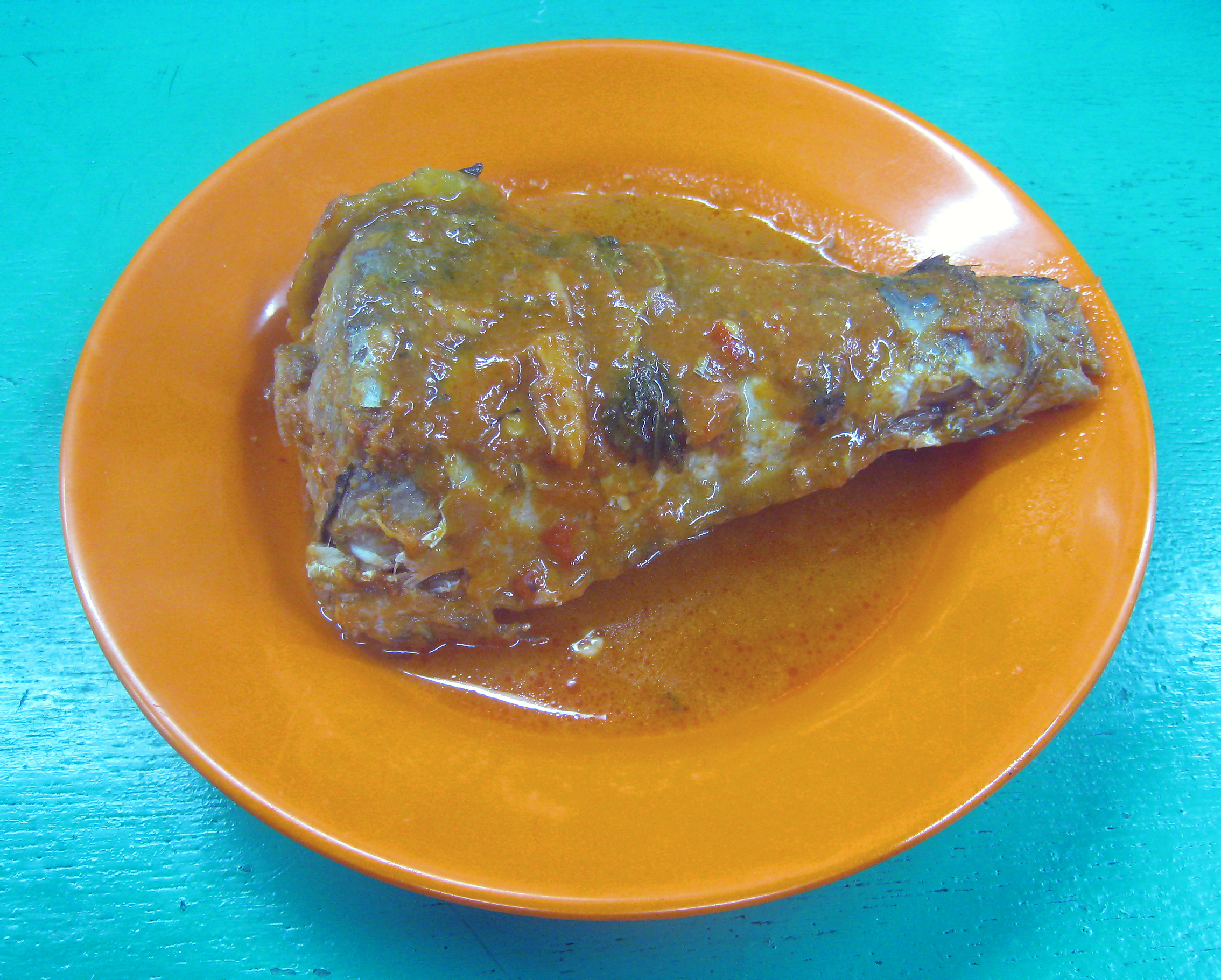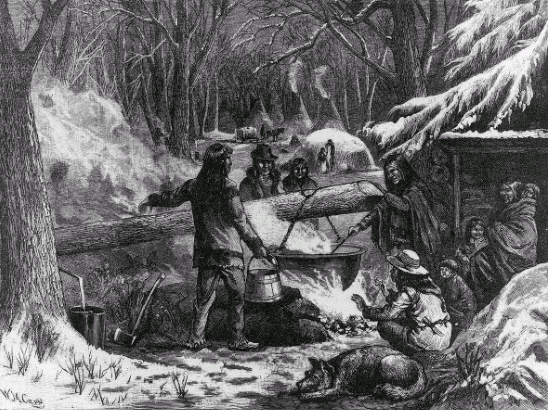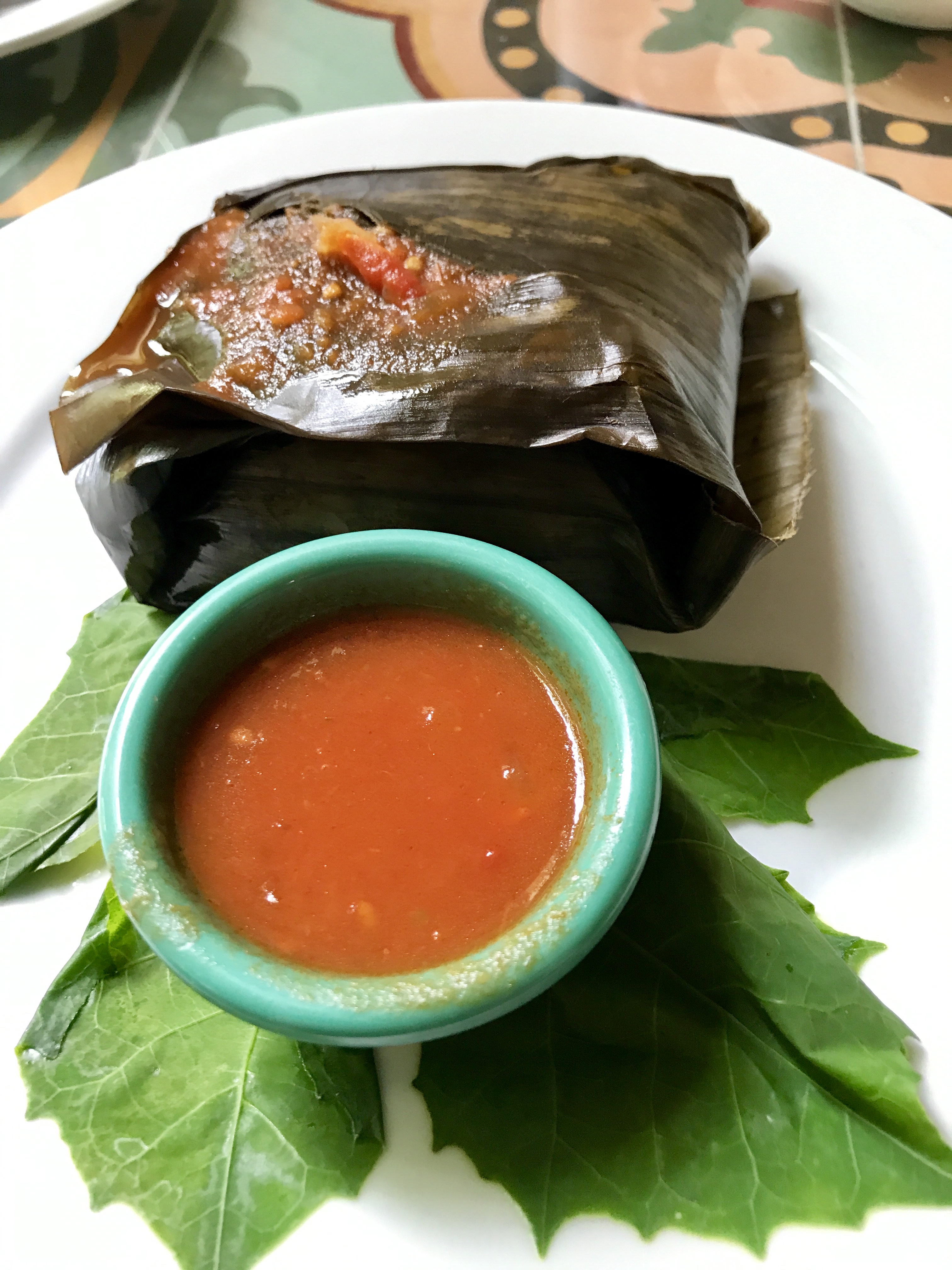|
Pepián
Pepián is a thick meat stew from Guatemala. It is one of the oldest and most recognizable dishes of Guatemalan cuisine having as its origin the influences from Guatemala's colonial past and the indigenous cuisine. The meat-based stew, thickened with gourd seeds, can be made with beef or chicken (beef is more common in urban centers) it includes in traditional recipes tomatillo, tomato and hot chili. Guatemalan restaurants in the United States usually consider the dish to be of Maya origin. It is a popular street food in Guatemalan cities. In Guatemala, it is considered a national dish. '' Pipián'' is a similar dish from Mexican cuisine. See also * List of stews This is a list of notable stews. A stew is a combination of solid food ingredients that have been cooked in liquid and served in the resultant gravy. Ingredients in a stew can include any combination of vegetables, such as carrots, potatoes, bea ... References {{reflist Guatemalan cuisine Stews Ancient dish ... [...More Info...] [...Related Items...] OR: [Wikipedia] [Google] [Baidu] |
Guatemala
Guatemala, officially the Republic of Guatemala, is a country in Central America. It is bordered to the north and west by Mexico, to the northeast by Belize, to the east by Honduras, and to the southeast by El Salvador. It is hydrologically bordered to the south by the Pacific Ocean and to the northeast by the Gulf of Honduras. The territory of modern Guatemala hosted the core of the Maya civilization, which extended across Mesoamerica; in the 16th century, most of this was Spanish conquest of Guatemala, conquered by the Spanish and claimed as part of the viceroyalty of New Spain. Guatemala attained independence from Spain and Mexico in 1821. From 1823 to 1841, it was part of the Federal Republic of Central America. For the latter half of the 19th century, Guatemala suffered instability and civil strife. From the early 20th century, it was ruled by a series of dictators backed by the United States. In 1944, authoritarian leader Jorge Ubico was overthrown by a pro-democratic m ... [...More Info...] [...Related Items...] OR: [Wikipedia] [Google] [Baidu] |
Guatemalan Cuisine
Most traditional foods in Guatemalan cuisine are based on Mayan cuisine, Maya cuisine, with Spanish cuisine, Spanish influence, and prominently feature Maize, corn, Chili pepper, chilies and beans as key ingredients. Guatemala is famously home to the Hass avocado. There are also foods that are commonly eaten on certain days of the week. For example, it is a popular custom to eat ''paches'' (a kind of tamale made from potatoes) on Thursday. Certain dishes are also associated with special occasions, such as fiambre for All Saints Day on November 1 and tamales, which are common around Christmas. History Regional Guatemalan cuisine is relatively obscure, due in part to its geographic isolation in volcanic highlands, and also due to the Guatemalan Civil War, civil war in the second half of the 20th century which discouraged international visitors. Guatemalan cuisine is heavily influenced by Mayan cuisine, with some Spanish influences as well. Many dishes are hyper-regional and are ... [...More Info...] [...Related Items...] OR: [Wikipedia] [Google] [Baidu] |
List Of Stews
This is a list of notable stews. A stew is a combination of solid food ingredients that have been cooked in liquid and served in the resultant gravy. Ingredients in a stew can include any combination of vegetables, such as carrots, potatoes, beans, onions, peppers, tomatoes, etc., and frequently with meat, especially tougher meats suitable for moist, slow cooking, such as beef chuck or round. Poultry, pork, lamb or mutton, sausages, and seafood Seafood is any form of Marine life, sea life regarded as food by humans, prominently including Fish as food, fish and shellfish. Shellfish include various species of Mollusca, molluscs (e.g., bivalve molluscs such as clams, oysters, and mussel ... are also used. Stews See also * Fish stew – includes a list of many fish stews * List of Azerbaijani soups and stews * List of fish and seafood soups * List of Japanese soups and stews * List of soups * List of Spanish soups and stews References {{Soups ... [...More Info...] [...Related Items...] OR: [Wikipedia] [Google] [Baidu] |
Spanish Conquest Of Guatemala
In a protracted conflict during the Spanish colonization of the Americas, Spanish colonisers gradually incorporated the territory that became the modern country of Guatemala into the colonial Viceroyalty of New Spain. Before the conquest, this territory contained a number of competing Mesoamerican kingdoms, the majority of which were Maya peoples, Maya. Many conquistadors viewed the Maya as "infidels" who needed to be forcefully converted and pacified, disregarding the achievements of their Maya civilization, civilization.Jones 2000, p. 356. The first contact between the Maya and European colonization of the Americas, European explorers came in the early 16th century when a Spain, Spanish ship sailing from Panama to Hispaniola, Santo Domingo (Hispaniola) was wrecked on the east coast of the Yucatán Peninsula in 1511. Several Spanish expeditions followed in 1517 and 1519, making landfall on various parts of the Yucatán coast. The Spanish conquest of the Maya was a prolonged affair ... [...More Info...] [...Related Items...] OR: [Wikipedia] [Google] [Baidu] |
Indigenous Cuisine Of The Americas
Indigenous cuisine of the Americas includes all cuisines and food practices of the Indigenous peoples of the Americas. Contemporary Native peoples retain a varied culture of traditional foods, along with the addition of some post-contact foods that have become customary and even iconic of present-day Indigenous American social gatherings (for example, frybread). Foods like cornbread, Turkey meat, turkey, cranberry, blueberry, hominy, and Mush (cornmeal), mush have been adopted into the cuisine of the broader United States population from Native American cultures. In other cases, documents from the early periods of Indigenous American contact with European, African, and Asian peoples have allowed the recovery and revitalization of Indigenous food practices that had formerly passed out of popularity. The most important Indigenous American crops have generally included Indian corn (or maize, from the Taíno name for the plant), beans, squash, pumpkins, sunflowers, wild rice, sweet ... [...More Info...] [...Related Items...] OR: [Wikipedia] [Google] [Baidu] |
Tomatillo
The tomatillo (''Physalis philadelphica'' and ''Physalis ixocarpa''), also known as the Mexican husk tomato, is a plant of the nightshade family bearing small, spherical, and green or green-purple fruit. Tomatillos originated in Mexico and were cultivated in the Pre-Columbian Mexico, pre-Columbian era. A staple of Mexican cuisine, they are eaten raw and cooked in a variety of dishes, particularly salsa verde. The tomatillo is a perennial plant, but is generally grown for agriculture each year as if it were an annual plant, annual. Names The tomatillo (from Nahuatl, ') is also known as husk tomato, Mexican groundcherry, large-flowered tomatillo, or Mexican husk tomato. Some of these names, however, can also refer to other species in the genus ''Physalis''. Other names are Mexican green tomato and miltomate. In Spanish language, Spanish, it is called ''tomate de cáscara'' (husk tomato), ''tomate de fresadilla'' (little strawberry tomato), ''tomate milpero'' (field tomato), ''t ... [...More Info...] [...Related Items...] OR: [Wikipedia] [Google] [Baidu] |
Tomato
The tomato (, ), ''Solanum lycopersicum'', is a plant whose fruit is an edible Berry (botany), berry that is eaten as a vegetable. The tomato is a member of the nightshade family that includes tobacco, potato, and chili peppers. It originated from and was domesticated in western South America. It was introduced to the Old World by the Spanish in the Columbian exchange in the 16th century. Tomato plants are vines, largely Annual plant, annual and vulnerable to frost, though sometimes living longer in greenhouses. The flowers are able to self-fertilise. Modern varieties have been bred to ripen uniformly red, in a process that has impaired the fruit's sweetness and flavor. There are thousands of cultivars, varying in size, color, shape, and flavor. Tomatoes are attacked by many insect pests and nematodes, and are subject to diseases caused by viruses and by mildew and blight fungi. The tomato has a strong savoury umami flavor, and is an important ingredient in cuisines around ... [...More Info...] [...Related Items...] OR: [Wikipedia] [Google] [Baidu] |
Ancient Maya Cuisine
Ancient Maya cuisine was varied and extensive. Many different types of resources were consumed, including maritime, flora, and faunal material, and food was obtained or produced through strategies such as hunting, foraging, and large-scale agricultural production. Plant domestication concentrated upon several core foods, the most important of which was maize. Much of the ancient Maya food supply was grown in agricultural fields and forest gardens, known as ''pet kot''. The system takes its name from the stones (''pet'' meaning "circular" and ''kot'' "wall of loose stones") that characteristically surrounded the gardens. The ancient Maya adopted a number of adaptive techniques that, if necessary, allowed for the clear-cutting of land and re-infused the soil with nutrients. Among these was slash-and-burn, or swidden, agriculture, a technique that cleared and temporarily fertilized the area. For example, the introduction of ash into the soil raises the soil's pH. This in turn tem ... [...More Info...] [...Related Items...] OR: [Wikipedia] [Google] [Baidu] |
National Dish
A national dish is a culinary Dish (food), dish that is strongly associated with a particular country. A dish can be considered a national dish for a variety of reasons: * It is a staple food, made from a selection of locally available foodstuffs that can be prepared in a distinctive way, such as ''fruits de mer'', served along the west coast of France. * It contains a particular ingredient that is produced locally, such as a paprika grown in the European Pyrenees. * It is served as a Festival, festive culinary tradition that forms part of a cultural heritage—for example, barbecues at summer camp or fondue at Party#Dinner party, dinner parties—or as part of a Religion, religious practice, such as Korban Pesach or Iftar celebrations. * It has been promoted as a national dish, by the country itself, such as the promotion of fondue as a national dish of Switzerland by the Swiss Cheese Union (Schweizerische Käseunion) in the 1930s. National dishes are part of National identity, a ... [...More Info...] [...Related Items...] OR: [Wikipedia] [Google] [Baidu] |
Pipián (sauce)
Pipián is a sauce from Mexican cuisine made with puréed Leaf vegetable, greens and thickened with ground pumpkin seeds. The sauce is said to have origins in the ancient Aztec, Purepecha and Mayan cuisines. The greens used to make the sauce include tomatillos and peppers such as poblano, serrano pepper, serrano and jalapeno, jalapeño. It can be served with carnitas, and roasted poultry or vegetables, or served as an enchilada sauce. It is sometimes added to rice and beans to enhance flavor or worked into dough to make spicy tamales. Other ingredients used for the sauce are sesame seeds, ancho chile, peanuts and spices such as cinnamon, cumin and garlic. References Squash and pumpkin dishes Ancient dishes Mexican sauces {{Mexico-cuisine-stub ... [...More Info...] [...Related Items...] OR: [Wikipedia] [Google] [Baidu] |
Mexican Cuisine
Mexican cuisine consists of the cuisines and associated traditions of the modern country of Mexico. Its earliest roots lie in Mesoamerican Cuisine, Mesoamerican cuisine. Mexican cuisine's ingredients and methods arise from the area's first agricultural communities, such as those of the Olmecs, Olmec and Maya civilization, Maya, who domesticated maize, created the standard process of nixtamalization, and established foodways. Successive waves of other Mesoamerican groups brought with them their cooking methods. These included the Teotihuacanos, Toltec, Huastec civilization, Huastec, Zapotec civilization, Zapotec, Mixtec, Otomi people, Otomi, Tarascan state, Purépecha, Totonac, Mazatec, Mazahua people, Mazahua, and Nahuas, Nahua. With the Mexica formation of the multi-ethnic Triple Alliance (Aztec Empire), culinary foodways became infused (Aztec cuisine). Today's food staples native to the land include corn (maize), turkey, beans, squash, amaranth, Chia seed, chia, avocados, to ... [...More Info...] [...Related Items...] OR: [Wikipedia] [Google] [Baidu] |
Stews
A stew is a combination of solid food ingredients that have been cooked in liquid and served in the resultant gravy. Ingredients can include any combination of vegetables and may include meat, especially tougher meats suitable for slow-cooking, such as beef, pork, venison, rabbit, lamb, poultry, sausages, and seafood. While water can be used as the stew-cooking liquid, stock is also common. A small amount of red wine or other alcohol is sometimes added for flavour. Seasonings and flavourings may also be added. Stews are typically cooked at a relatively low temperature ( simmered, not boiled), allowing flavours to mingle. Stewing is suitable for the least tender cuts of meat that become tender and juicy with the slow, moist heat method. This makes it popular for low-cost cooking. Cuts with a certain amount of marbling and gelatinous connective tissue give moist, juicy stews, while lean meat may easily become dry. Stews are thickened by reduction or with flour, either by coati ... [...More Info...] [...Related Items...] OR: [Wikipedia] [Google] [Baidu] |






